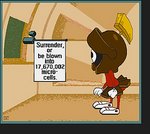Gypsy Frix & Rebecca Dosch
Final Project Reflection
ECOMP 7007
We designed a WebQuest for our final project. The students take on the role of FBI agents working in conjunction with the CDC. Students work in pairs researching viruses and bacteria that pose a threat to mankind. The final culminating product is a poster that advertises the danger of the bacteria or virus to the public.
This project took a lot of planning. We decided to focus on bacteria and viruses because the topic is relevant to the science curriculum in Georgia. It was a bit overwhelming sorting through the thousands of websites and resources that are available online. We made a hotlist of sites that we thought would be beneficial for our students to explore. Eventually, we narrowed down the websites that we wanted our students to use to complete the WebQuest.
We designed rubrics using Rubistar. This program was extremely easy to learn how to use. It allowed us to set up our rubric exactly as we needed it for our WebQuest. The website also allowed us to see other teacher’s ideas and rubrics. It is very helpful to have the opportunity to compare your rubrics with other educators.
We used the website www.weebly.com to publish our website. We had not used Weebly before so this was yet another program to learn in order to complete our final project. We found Weebly easier to use than the Dreamweaver program we worked with in class. However, we would probably use another program the next time we make a website. Weebly limited us a little bit with our ideas but was a great introductory program for web design.
In order to use pictures we found online, we had to gain copyright permission. This consisted of emailing the person who had the rights to the pictures and gaining his approval. His stipulations were: we had to use images that contained the visible copyright, we needed to place a photo credit and link to his site (www.denniskunkel.com), and we had to provide him our URL once we published the website.
We believe this project is easily implemented into any science teachers plans. The teacher should have access to a computer lab and a basic understanding of viruses and bacteria before assigning this WebQuest.
Overall, while this project took a long time to complete, it is something that can be used more than once and be shared with other teachers. The project can easily be updated on the website to stay current and relevant with state and national standards.
Final Project Reflection
ECOMP 7007
We designed a WebQuest for our final project. The students take on the role of FBI agents working in conjunction with the CDC. Students work in pairs researching viruses and bacteria that pose a threat to mankind. The final culminating product is a poster that advertises the danger of the bacteria or virus to the public.
This project took a lot of planning. We decided to focus on bacteria and viruses because the topic is relevant to the science curriculum in Georgia. It was a bit overwhelming sorting through the thousands of websites and resources that are available online. We made a hotlist of sites that we thought would be beneficial for our students to explore. Eventually, we narrowed down the websites that we wanted our students to use to complete the WebQuest.
We designed rubrics using Rubistar. This program was extremely easy to learn how to use. It allowed us to set up our rubric exactly as we needed it for our WebQuest. The website also allowed us to see other teacher’s ideas and rubrics. It is very helpful to have the opportunity to compare your rubrics with other educators.
We used the website www.weebly.com to publish our website. We had not used Weebly before so this was yet another program to learn in order to complete our final project. We found Weebly easier to use than the Dreamweaver program we worked with in class. However, we would probably use another program the next time we make a website. Weebly limited us a little bit with our ideas but was a great introductory program for web design.
In order to use pictures we found online, we had to gain copyright permission. This consisted of emailing the person who had the rights to the pictures and gaining his approval. His stipulations were: we had to use images that contained the visible copyright, we needed to place a photo credit and link to his site (www.denniskunkel.com), and we had to provide him our URL once we published the website.
We believe this project is easily implemented into any science teachers plans. The teacher should have access to a computer lab and a basic understanding of viruses and bacteria before assigning this WebQuest.
Overall, while this project took a long time to complete, it is something that can be used more than once and be shared with other teachers. The project can easily be updated on the website to stay current and relevant with state and national standards.

